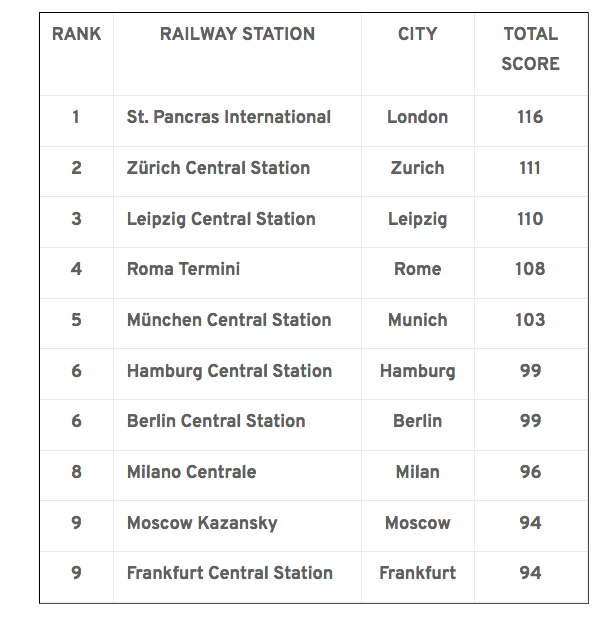The Consumer Choice Center (CCC) examined Europe's 50 largest railway stations and ranked them in terms of passenger experience, according to a mix of factors ranging from how crowded platforms are and accessibility to the number of destinations and cleanliness.
The judges crowned St. Pancras International in London as the best railway station in Europe. Switzerland's Zurich followed and Leipzig Central Station in Germany took the third spot.
The European Railway Station Index features mainly northern European railway stations in the top 10. Roma Termini and Milan Centrale are the only two southern European railway stations among the best ranked stations and Moscow Kazansky is the only eastern European railway station in the top 10.
Here is the ranking of the top 10 stations.

For Oslo S, however, the scores were not entirely impressive.
The station, the only Norwegian terminal included in the comparison, was 45th out of the 50 stations on the list.
Although its 19 platforms are comparable in number to stations figuring at the top end of the analysis (Roma Termini has 32, for example, and Zurich 26), the number of passengers per platform at Oslo S is actually lower at 2.9, compared to 5.9 in Zurich and 4.6 in Rome.
So where did it go wrong for the Norwegian station to end up with such a poor ranking?
Oslo Central loses points for accessibility. Very few of the stations included in the study are sub-standard on this point.
“Wheelchairs are accessible to platforms, but there are difficulties with boarding the trains due to platform heights/type of train. This is solved with elevators inside the trains or mobile wheelchair ramps,” CCC states in the report.
Additionally, some platforms only have ramp and conveyor belt access, while others are connected by elevators only, the summary notes.
Oslo posts a mediocre score for its number of shops and restaurants, with 24 and 21 of each respectively not making a favourable comparison with most peer stations. Additionally, the Norwegian station loses marks for its lack of a first class lounge.
It scored 100 percent for cleanliness, however.
The station’s signage is described as “80 percent clear”.
“Signs are provided for the whole station, but that does not mean that it is easy to find toilets etc. There are no signs that tells you where to find a specific shop/restaurant,” CCC writes.
With an overall score of 61, CCC puts Oslo S 45th out of the 50 stations in its study.
Is Oslo Central Station as bad is the report would suggest? What experiences have you had at the busy Norwegian station? Let us know – we'd love to hear your thoughts.



 Please whitelist us to continue reading.
Please whitelist us to continue reading.
Member comments